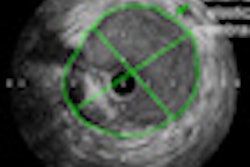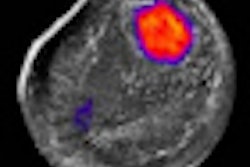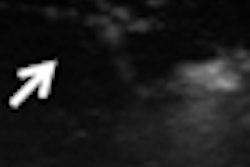Wednesday, December 1 | 11:40 a.m.-11:50 a.m. | SSK01-08 | Room E450A
Determining which ductal carcinoma in situ (DCIS) lesions could turn into aggressive cancers is one of breast imaging's biggest challenges. Fortunately, sonoelastography may be able to help, according to South Korean researchers.The researchers used sonoelastography to examine 102 women with 103 nonpalpable DCIS lesions. The mean size of the lesions was 15 mm, and patients were seen between June 2006 and May 2009. B-mode ultrasound scans and elastography studies were acquired, with lesion stiffness scored on a scale of 1 to 5.
Elasticity scores were the only independent feature for predicting an invasive component to DCIS lesions, the researchers found. They recommend that sonoelastographic lesion stiffness be used as a guideline to consider sentinel lymph node biopsy in patients with nonpalpable DCIS.



















